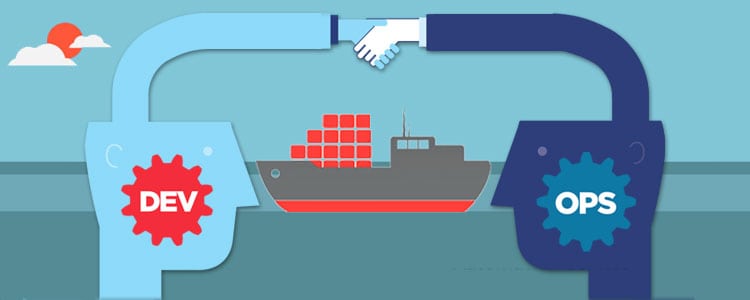
DevOps and Containers
Containerization is a lightweight alternative to full machine virtualization that involves encapsulating an application in a container with its own operating environment.
And DevOps (Development and Operations), according to Webopedia, is an enterprise software development phrase used to mean a type of agile relationship between Development and IT Operations that enables all elements of technology infrastructure to be automated and controlled through a Code. The goal of DevOps is to change and improve the relationship by advocating better communication and collaboration between the two business units.
Containers play a key role in a DevOps environment because they support deploying any arbitrary software stack. They provide a lightweight alternative to virtual machines and they enable developers to work with identical developer environments and stacks.
By building containers that wrap applications, services and all their dependencies, it uses an approach that lets you drop some risk from the development process. Any time you make a change, you build a new container and you test and deploy that container as a whole; not as an individual element.
According to CloudBees CTO and Jenkins project founder Kohsuke Kawaguchi, “You can use it for test, for production. Fail a test, and you rebuild. You can compile code into a module, like a Ruby gem, and then down to a container, and send to Puppet for deployment.”
What’s the role of Docker in DevOps?
Docker has made container-based virtualization widely available to developers who are continually exploring the possibilities in terms of application deployment and reducing the pressure of managing multiple development environments.
Docker’s user-friendliness is due to its high-level API and documentation, which enables the DevOps team to create official containerized applications. Thus Docker containers provide the tools to develop and deploy software applications in a controlled, isolated, flexible and highly portable infrastructure.
Docker container allows the developers to take the risks they want to take apply in the code, move and install new instances, and then roll back to an earlier state if it doesn’t go the way they wanted.
It has changed the way developers share, test, and deploy applications. Developers can now contain all the runtimes and libraries necessary to develop, test, and execute an application in an efficient, standardized way and be assured that it will deploy successfully in any environment that supports Docker.
A technology like Docker is instrumental in automating the principles of DevOps. Its predefined library images are operationally pretested, allowing developers to just go ahead and deploy. Chris Swan, CTO of CohesiveFT, says that this encourages the practice of rapid testing and ‘fast failing’ while iterating.
DevOps compliments containers too
Containers compliment DevOps and vice-versa DevOps compliment newer technologies like containers and micro services.
Thanks to DevOps automation and best practices, containers can be monitored right off the bat.
According to Sheng Liang, CEO and co-founder of Rancher Labs, “Before, monitoring was deployed manually. But now, because deploying container-based applications is so much easier, monitoring gets incorporated as part of the deployment process, either by including an agent as part of the container, or deploying it as a separate container alongside it.
Check out our articles and infographics.
